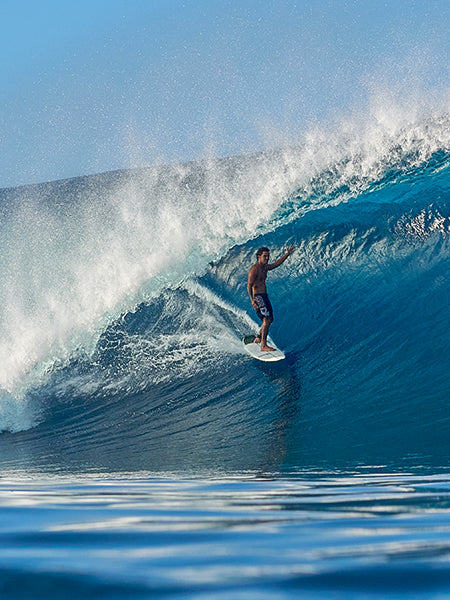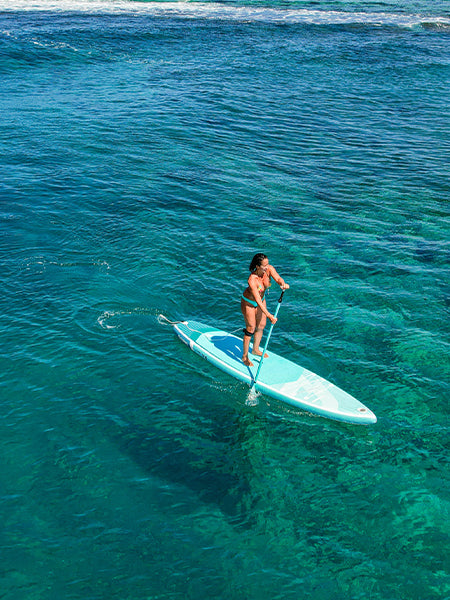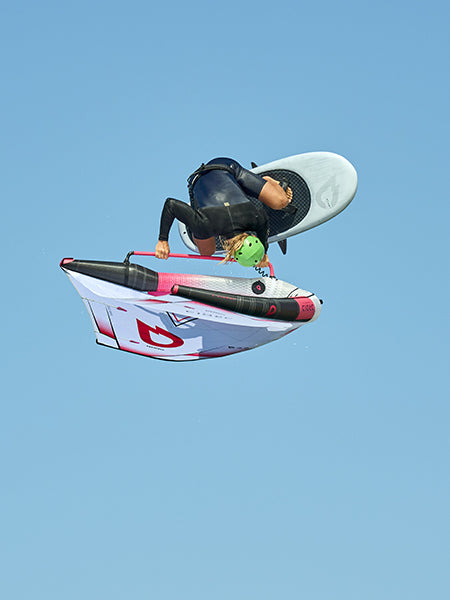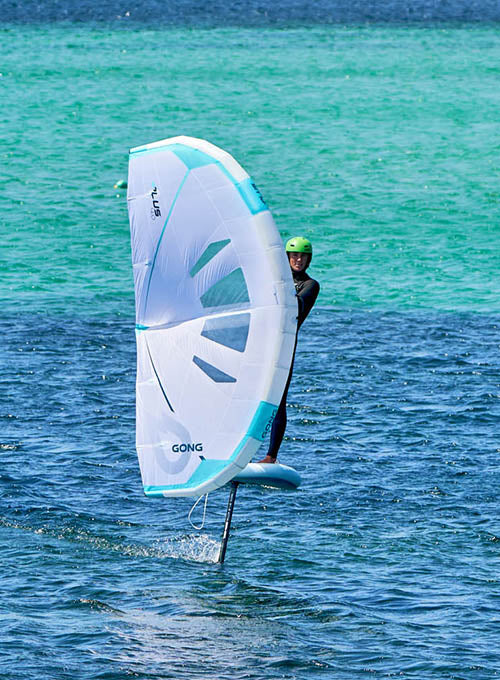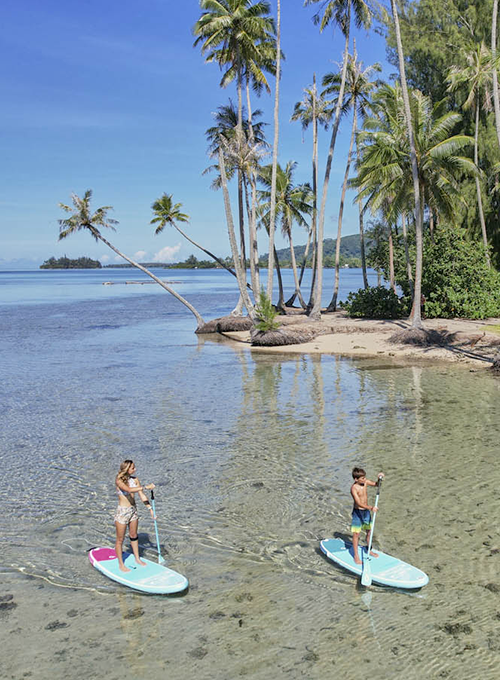Take-off

Tighten up the buttocks, take a big breathe and paddle like mad. The take-off determines the rest of the wave. You are well placed: ok. But if you’re as fast as a slug, the result will certainly not be brilliant. So, we paddle hard, like life depended on it. The paddling during take-off is not linear. There is a general acceleration. Then the wave picks you up. Warning: this is not the time to get up. We only get up when we’re on the downward pitch. If the wave throws you it’s because you’re getting up too early. Beginners make this mistake non-stop. Do not mix these two sensations. Once again, tell yourself that take off is an acceleration. This is your launching phase. The ideal movement to get up is quite complex. What’s necessary :
Rowing very hard.
Placing your hands flat on the deck under the chest, not on the rails!
Straighten the torso by sliding forward (you push a little backwards on your hands.
Swivel the pelvis almost 90°, left for the goofy and right for the regular.
Slide the outside of the front leg over the wax to bring the foot between the hands with quickness. It is the outside of the foot that rubs on the board, not the toes!
At the same time, bring the rear foot into the ideal position. The point of arrival will depend on the power of the wave and the sequence of moves. More advanced in a soft and mushy wave and farther back in a serious wave
The torso straightened, helped by the hands and arms that are projected upwards and forwards up to the maximum shoulder height. The legs pushing down on the board and go from bent to semi bent.
You prepare for the bottom turn that is coming. Here’s what you will find in the forum about the take-off phase: The take-off is surely the hardest act when you start surfing, but also the most essential. The quality of your take-off will surely determine the quality of your performance on the wave.
1) Find the right wave: Concentrate on the line-up. The horizon gives you various information about the arrival of a new series that’s coming (change of shape, colour, shadows). Understand the current, the wind. Integrate the repetitive swell cycle to foresee the future. Put other surfers in your strategy to not spoil or interfere or harsh their mellow. Taking the time to observe will allow you, with experience, to better position yourself to perform your take-off.
2) Train efficiently: A well-executed take-off starts with good paddling. Your paddling must allow you to integrate with the rhythm of the wave. This speed is the foundation of the one you will have in surfing. A good reference is to have the nose that skims the surface with your arms barely hitting the rails.
3) Arch your back like a bow: If you paddle slowly, do not bother going to the pool to muscle up. Close your legs !!! All those who are lagging behind have their legs apart and their forehead glued to the wax. Start by tightening your thighs, pressing your feet together. You will see your back stiffen and your board will stop dragging. By arching your back this this way, your shoulders will no longer need to raise your arms as high. You will have more endurance and you will have rock-hard buttocks.
4) The last Strokes: Depending on the type of board, you will have to paddle more or less but consider that you must leave with 3 to 5 paddle strokes. The more poorly placed you are, the less late in catching the wave you will be. Distinguish your final stroke (look for the waves perfect point) from the last one you make before the drop. In the final stroke, you must take a deep breath. Don’t let yourself get into the wave out of breath for you will be struggling for air the rest of the wave. During your last start up strokes, you must feel that you’re taking off : that you are being carried by the wave. If not, focus the weight of your body on your chest, slightly raising the buttocks and approaching your head from the front of the board, chin down.
5) Get up by ‘popping up’ onto the Board: Certainly, this is done in one movement so as not to break the inertia caused by your paddling. But above all you have to pop so hard on the board that you propel it forward. This is the base for gaining speed. Put your hands flat on the board. Do not grab the rails of the board, it will cause loss of balance and you will slow down your board. Push your pelvis forward when you get up by doing a lateral rotation to pass the knees to the side : do not face forward , you do not surf facing forward ! This is where you have to pop up to lighten your board and project it forward. If you still have lumbar discs: pop up as hard as you can.
6) Maintain a good stance on your Board: Favour the weight on your front leg for speed. It means you have to place your front foot in its sweet spot immediately. It will be supporting most of your weight. You will not be able to move it without ruining your flow. Your feet should be placed on the longitudinal axis of the board, that is to say centered on the stringer of your surfboard. Your rear foot must be positioned over he fins. Farther back if it will have to turn short, and more forward if a long bottom turn seems apparent. Between front and back, it is measured around 5cm. In all cases, you must land it on the tail pad.
7) The Eye of the Tiger: You know your feet, do not bother to look at them all the time. Your gaze must remain focused on the breaking the wave and to prepare your bottom turn and for what comes next. Be the YoYo, think like a YoYo: Not “yo bro” at the peak, no. Imagine that when you surf right like a stick, you are like the lifeless yoyo at the end of its unfurled thread. A good surfer is the yoyo’s rope and his board is yoyo! Flexion, extension, but always in the perfect rhythm to accumulate energy and be able to burn it in moves. We even make shortboards of 60 liters, so you have no more excuses. Because in point number 9 there was: surf a board that makes you good! And to be good, you have to take at least more than two waves per hour. So, friend that’s lacking in volume, ask yourself why you can’t catch waves.


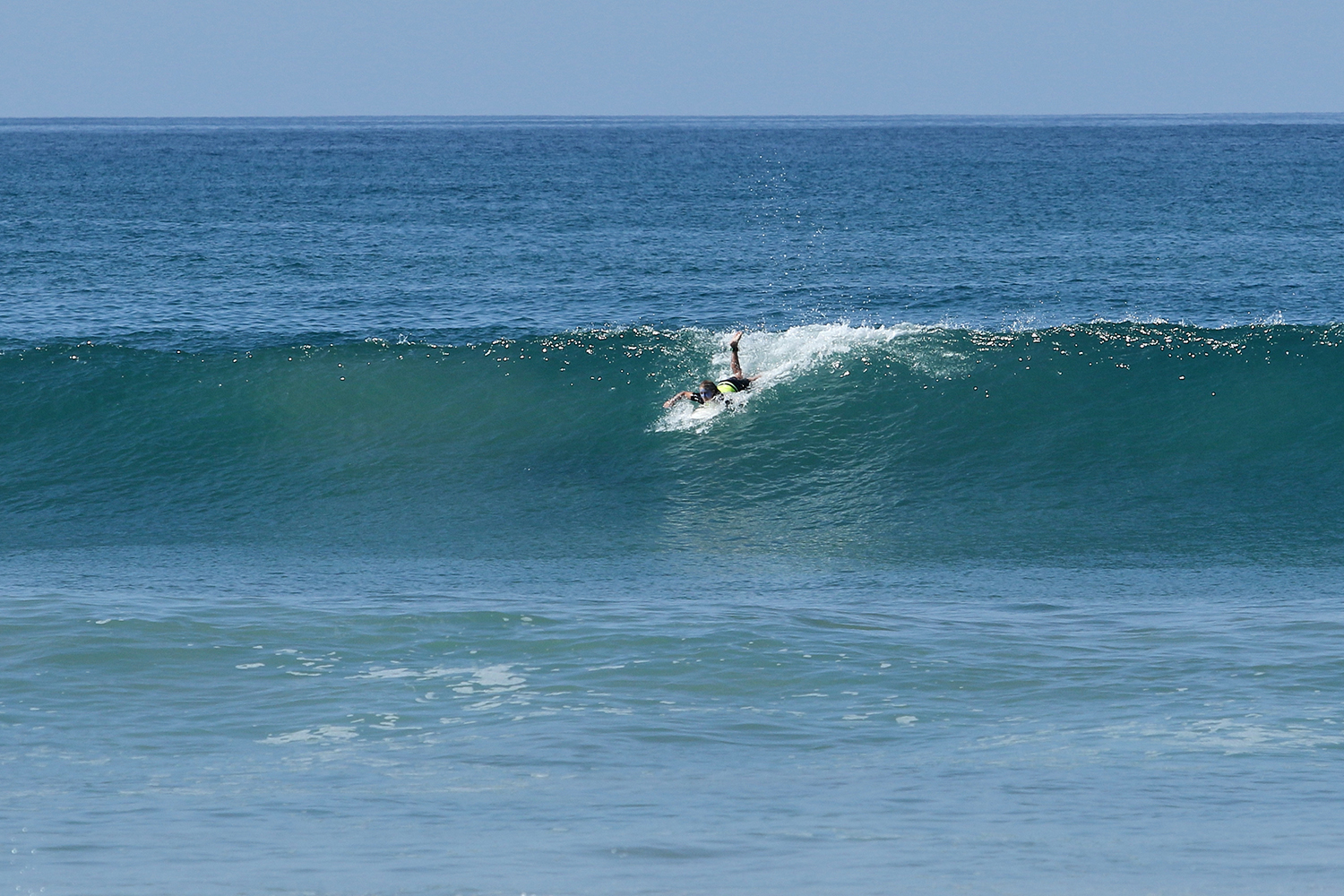
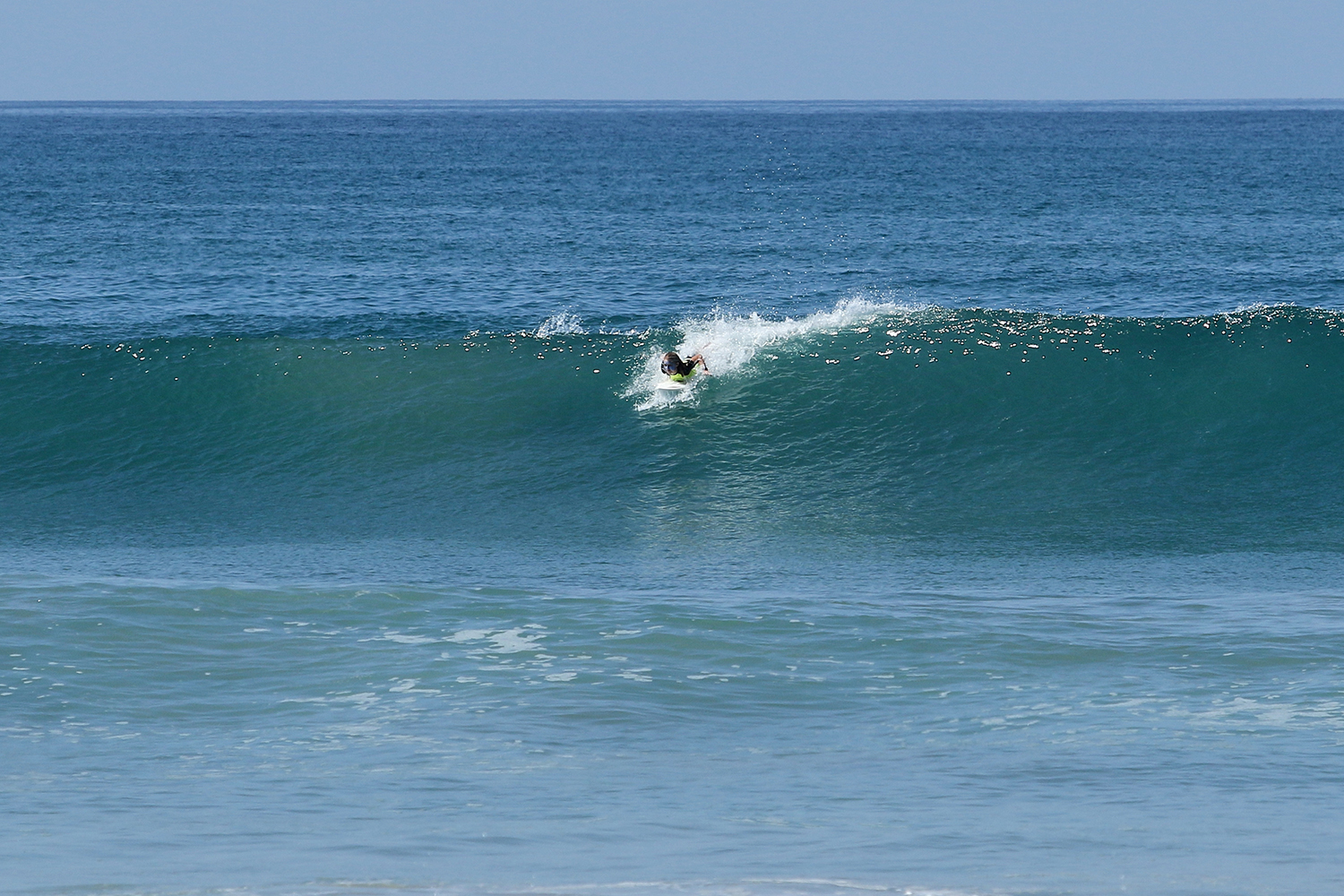
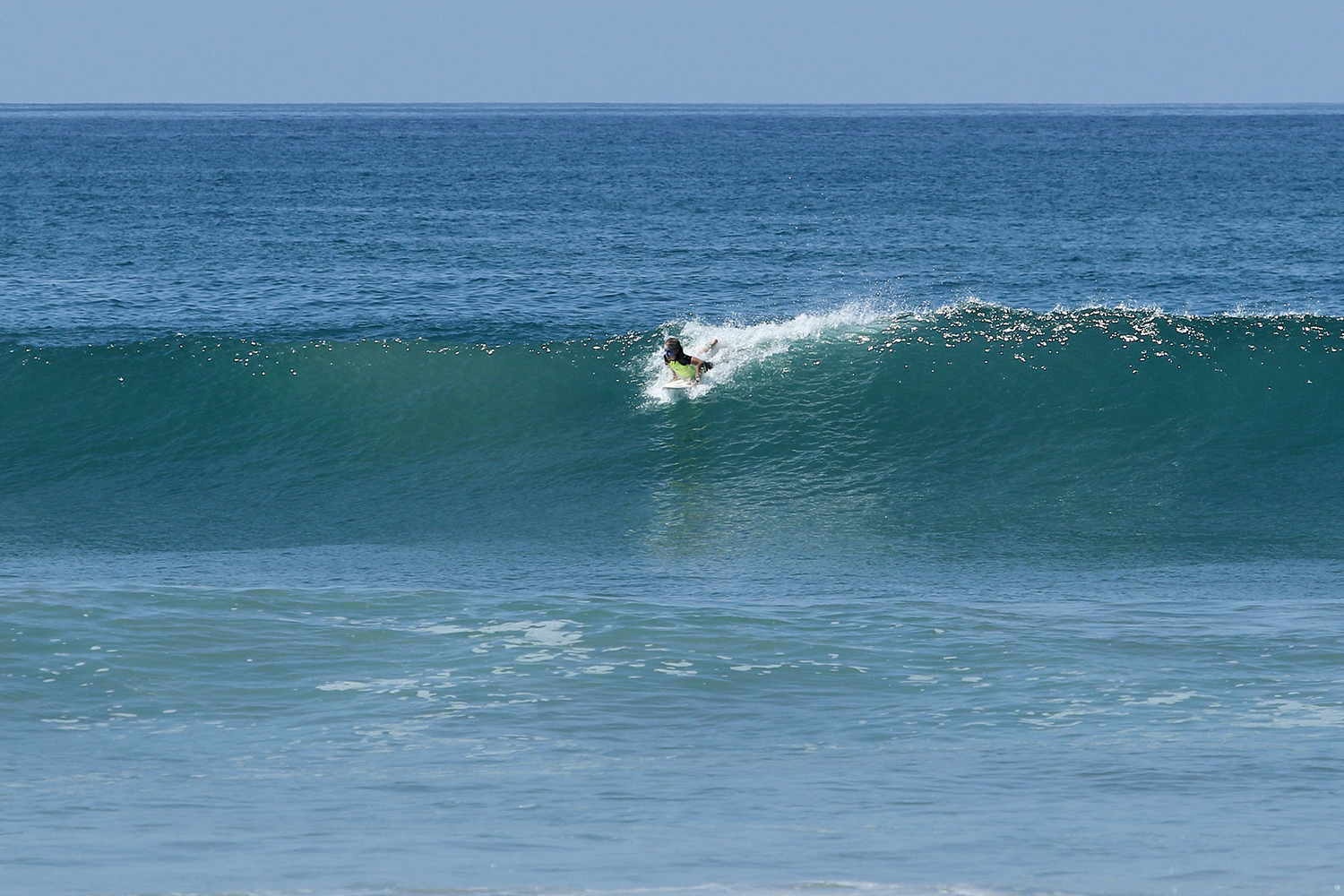

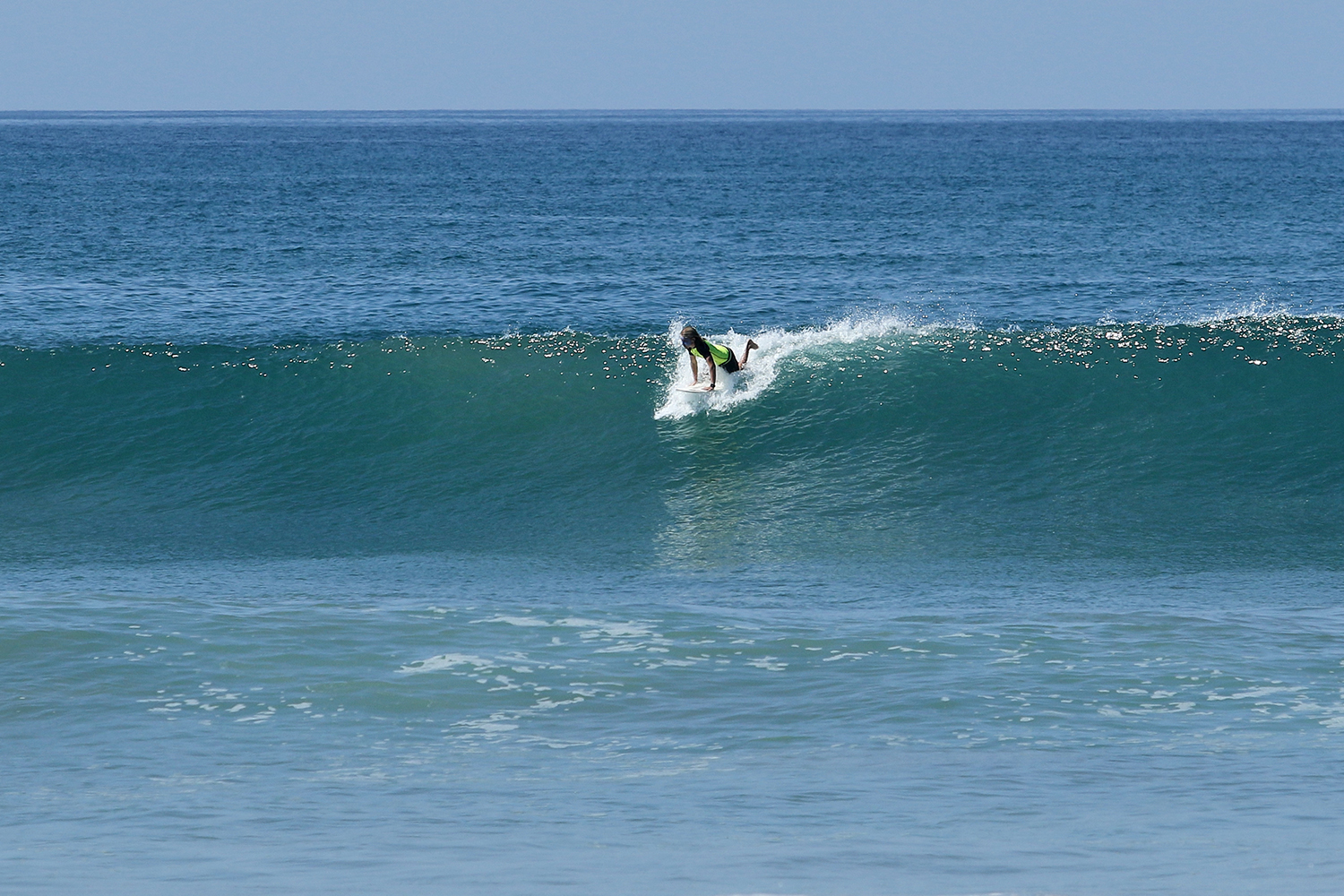
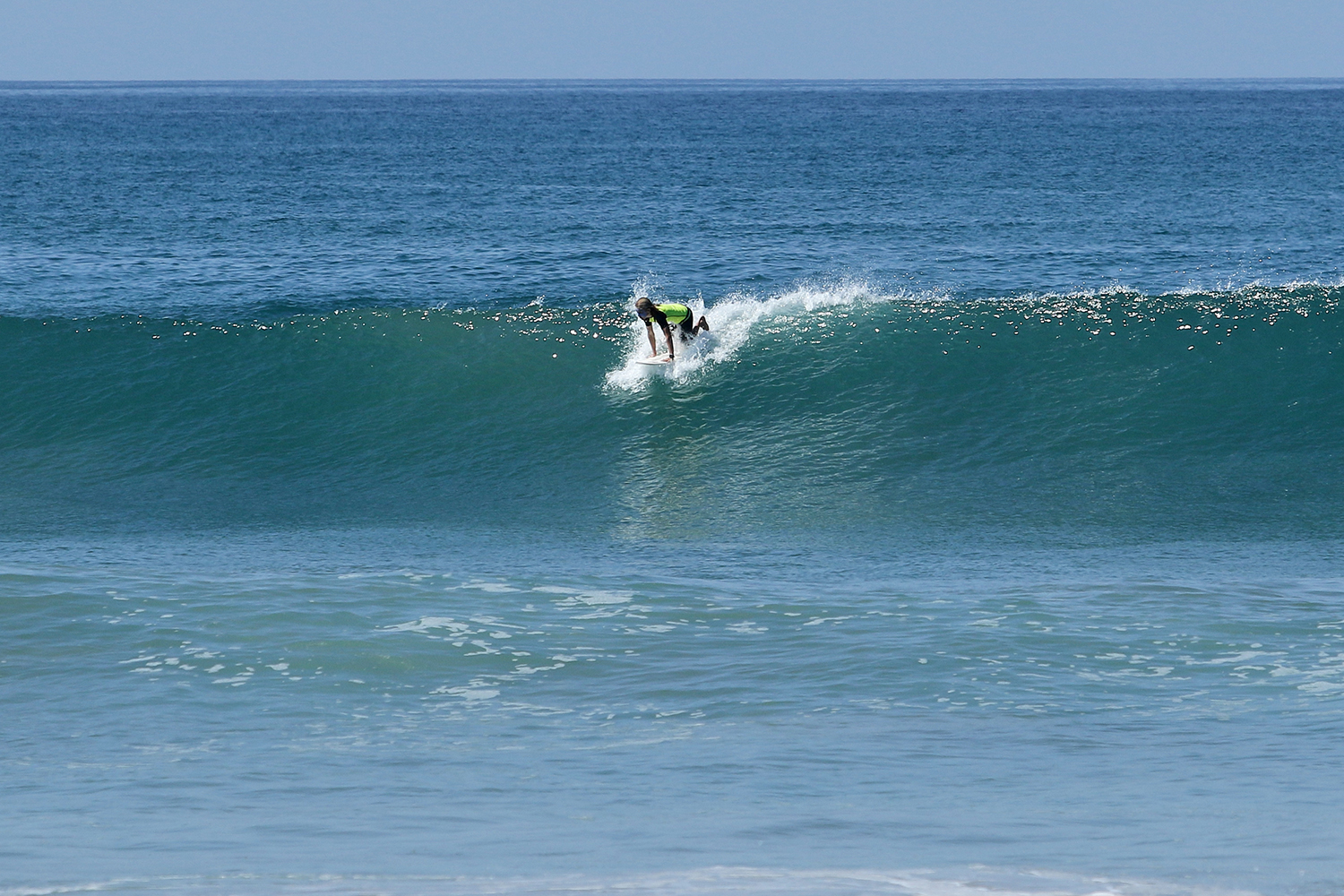

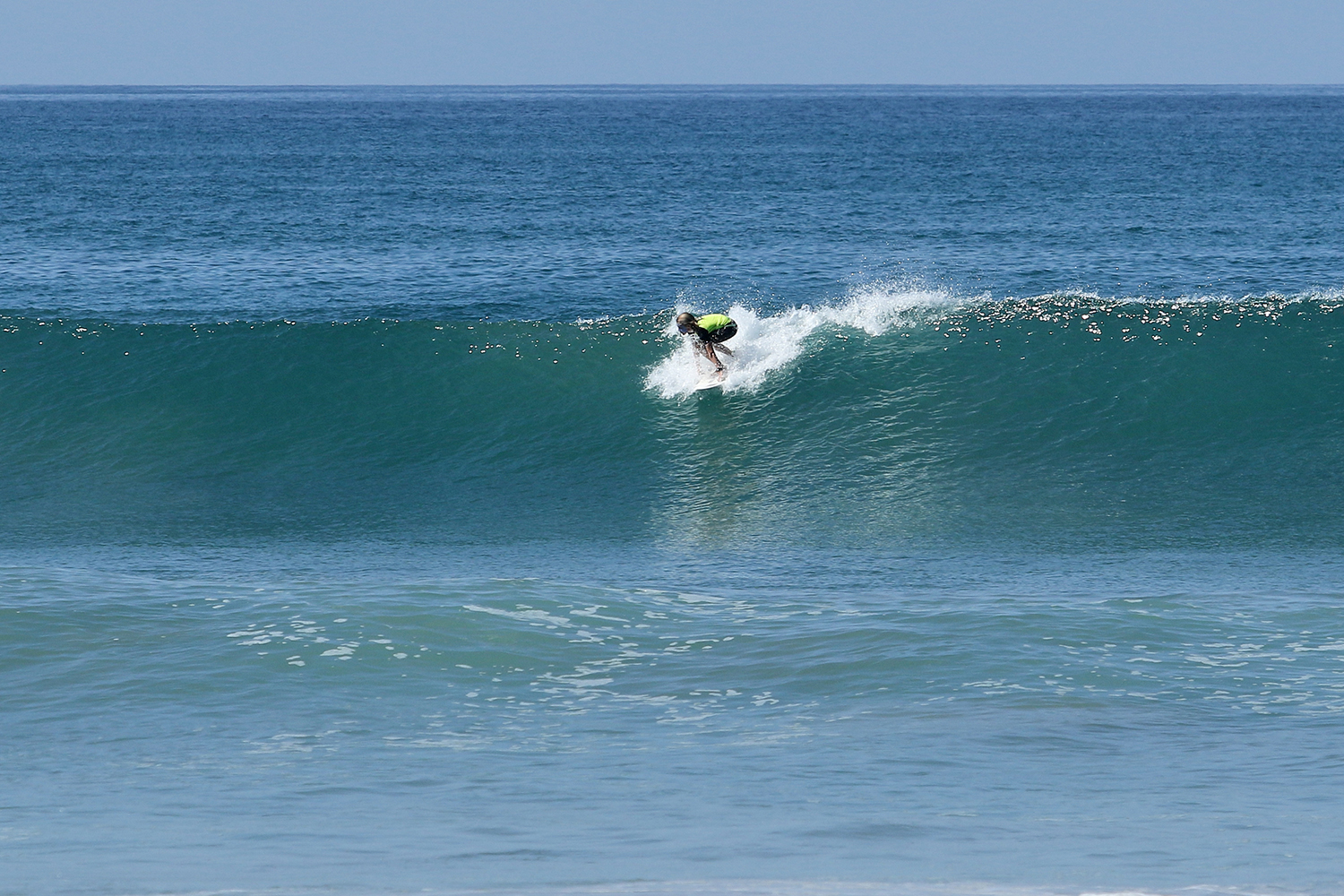
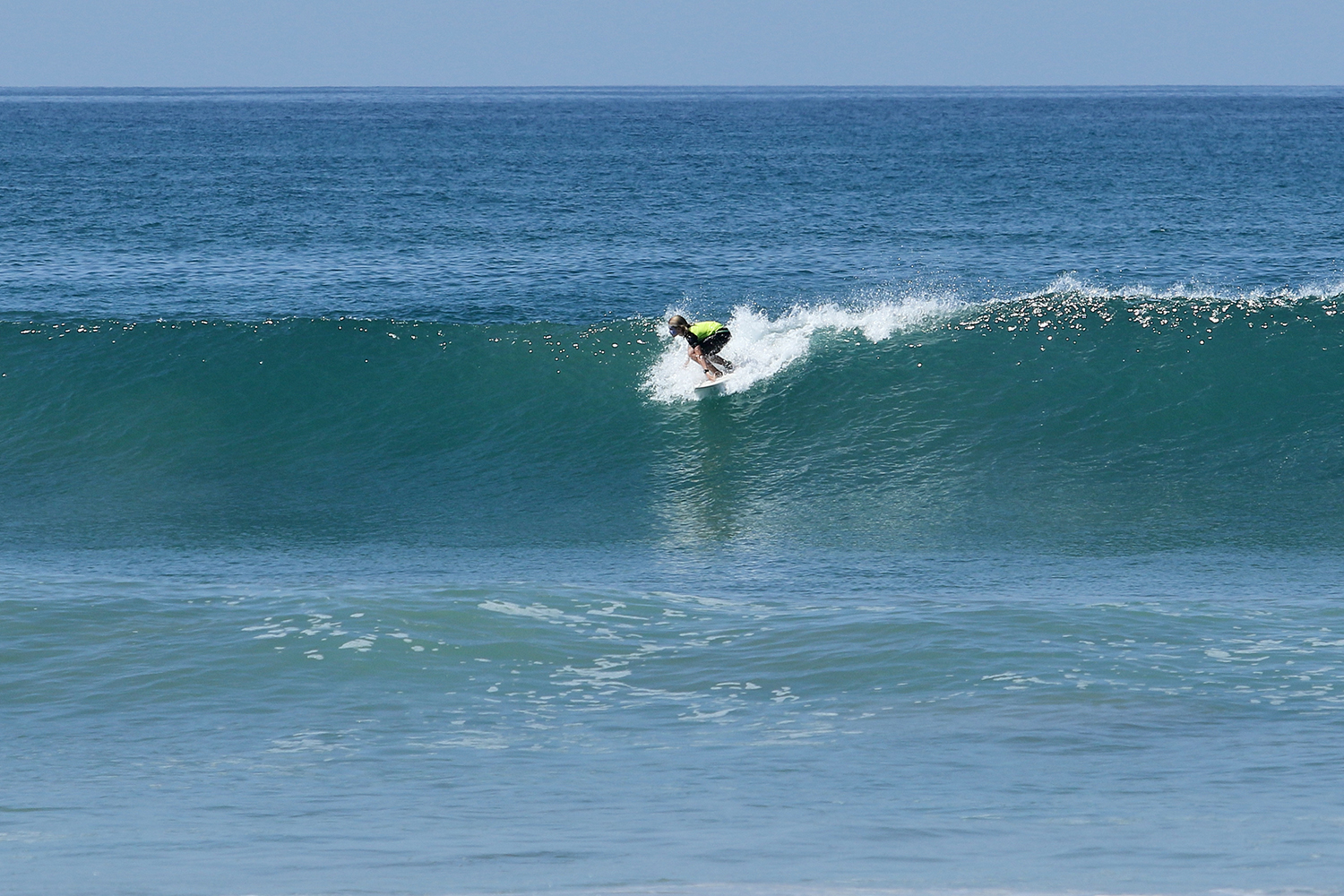
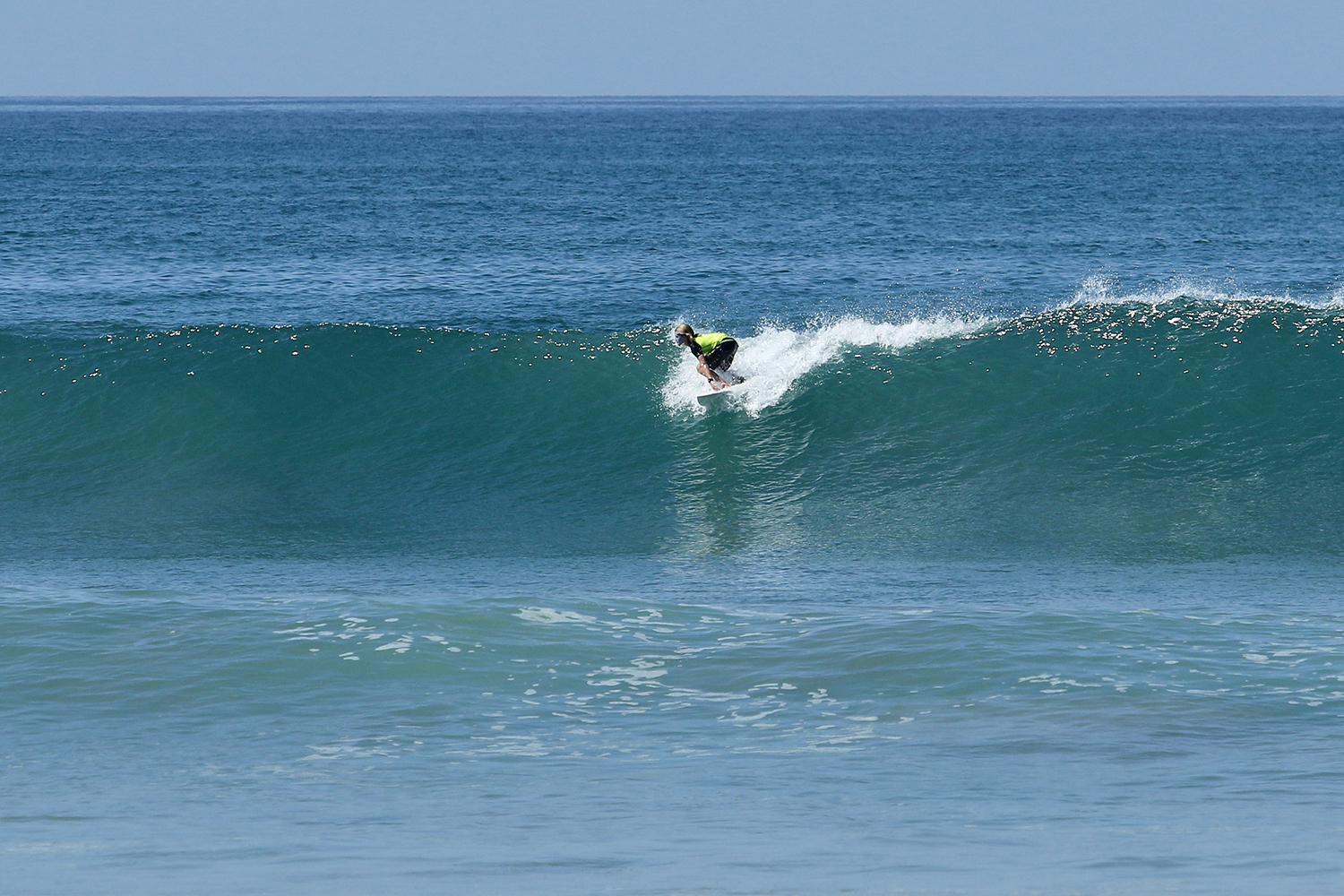
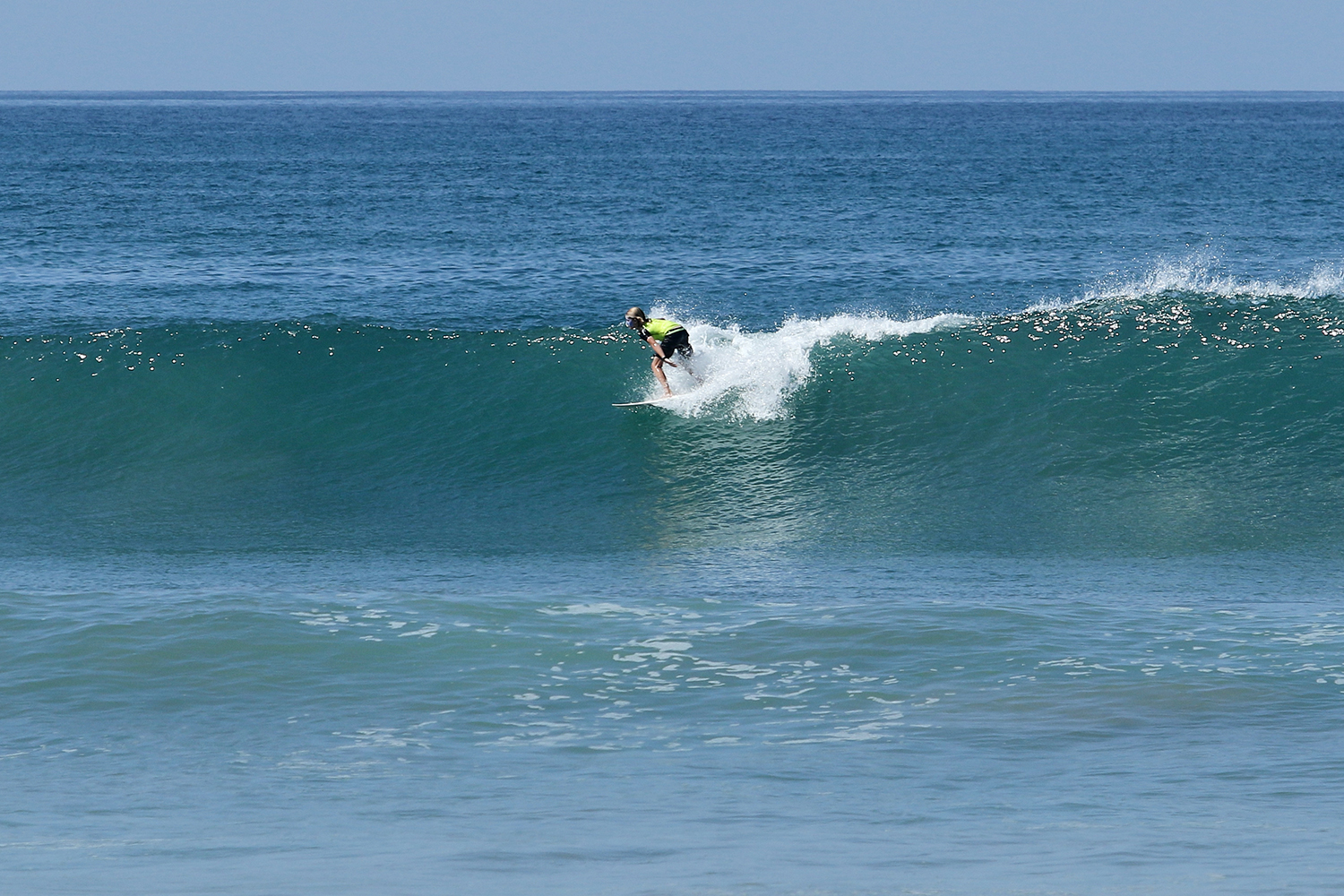


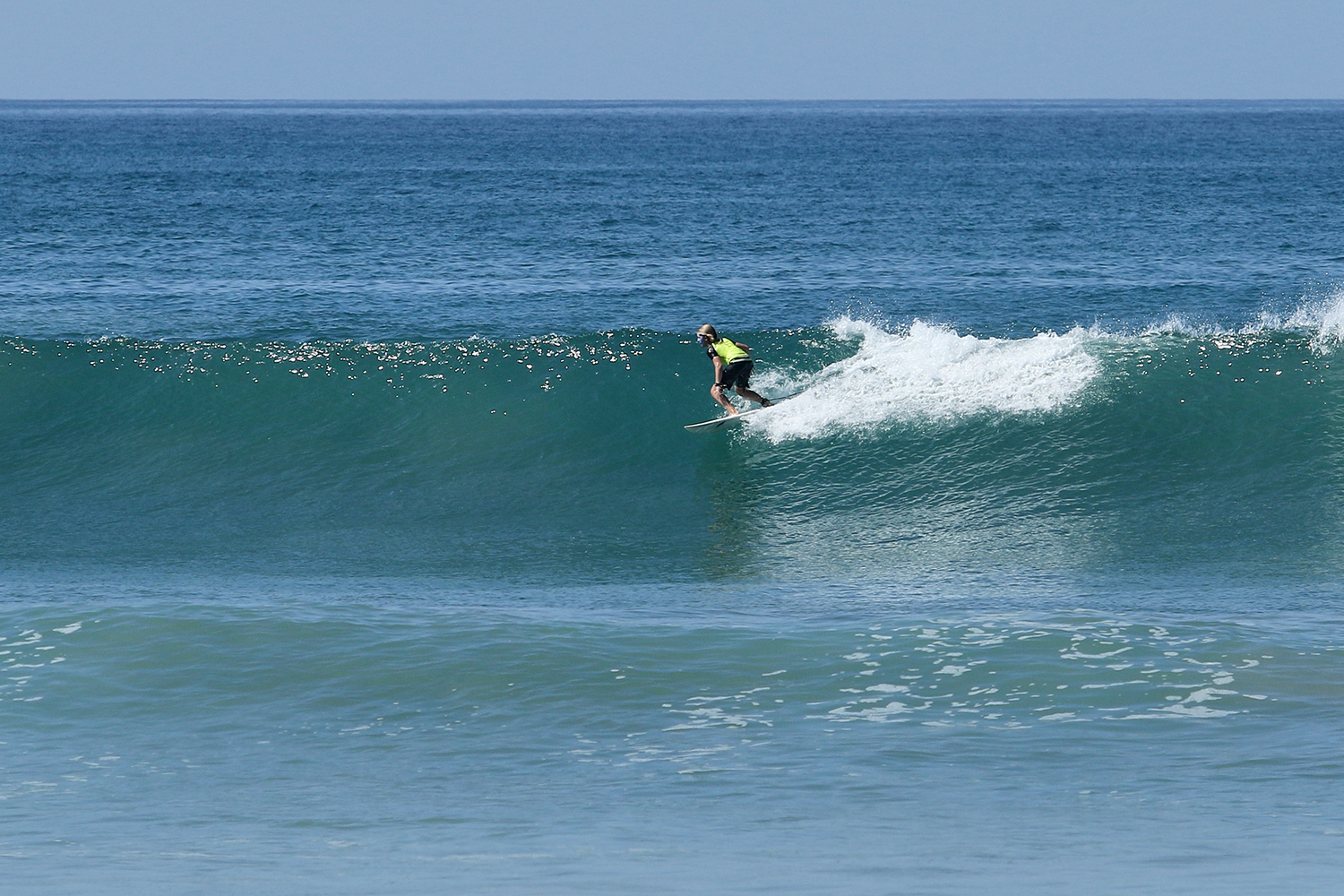
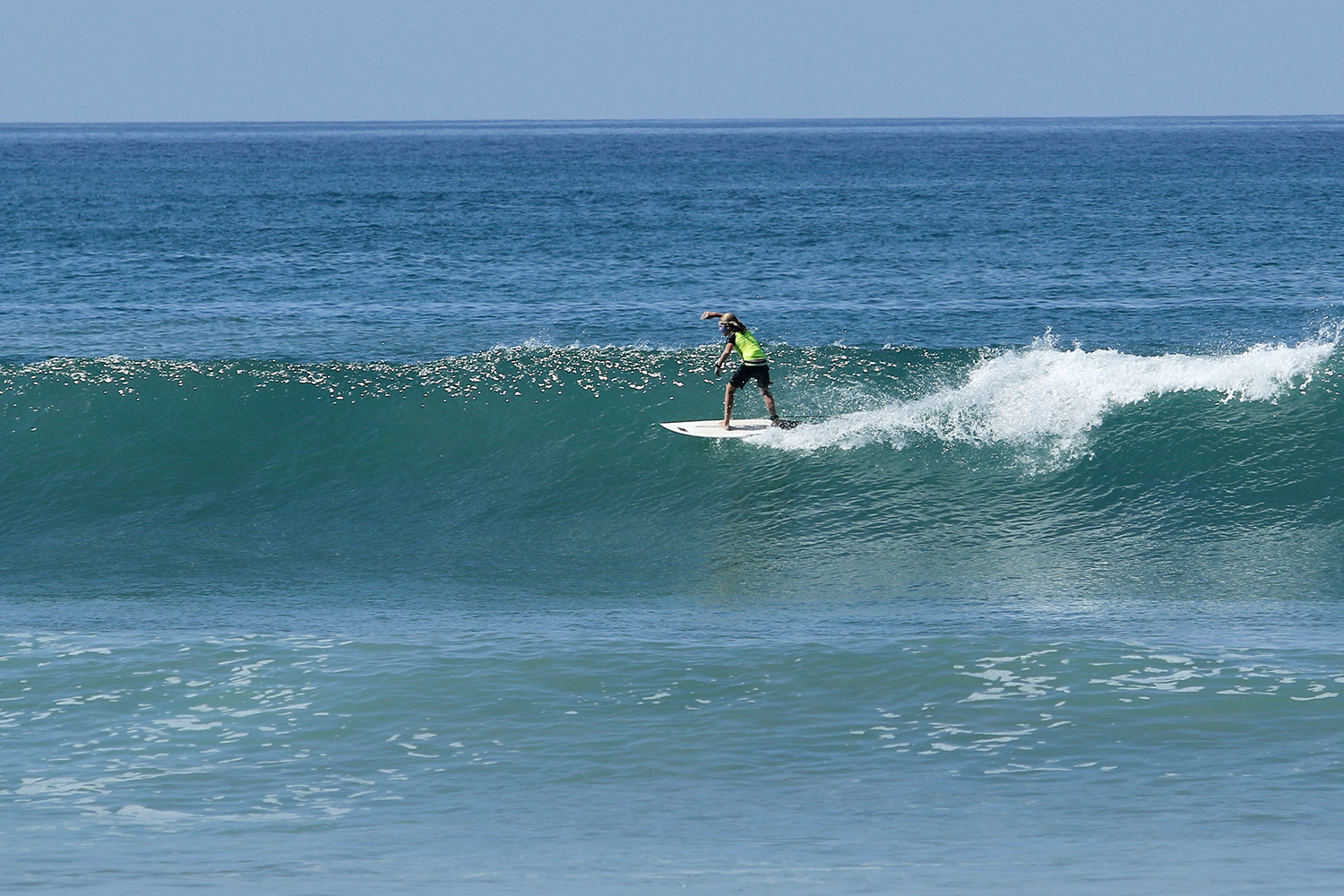
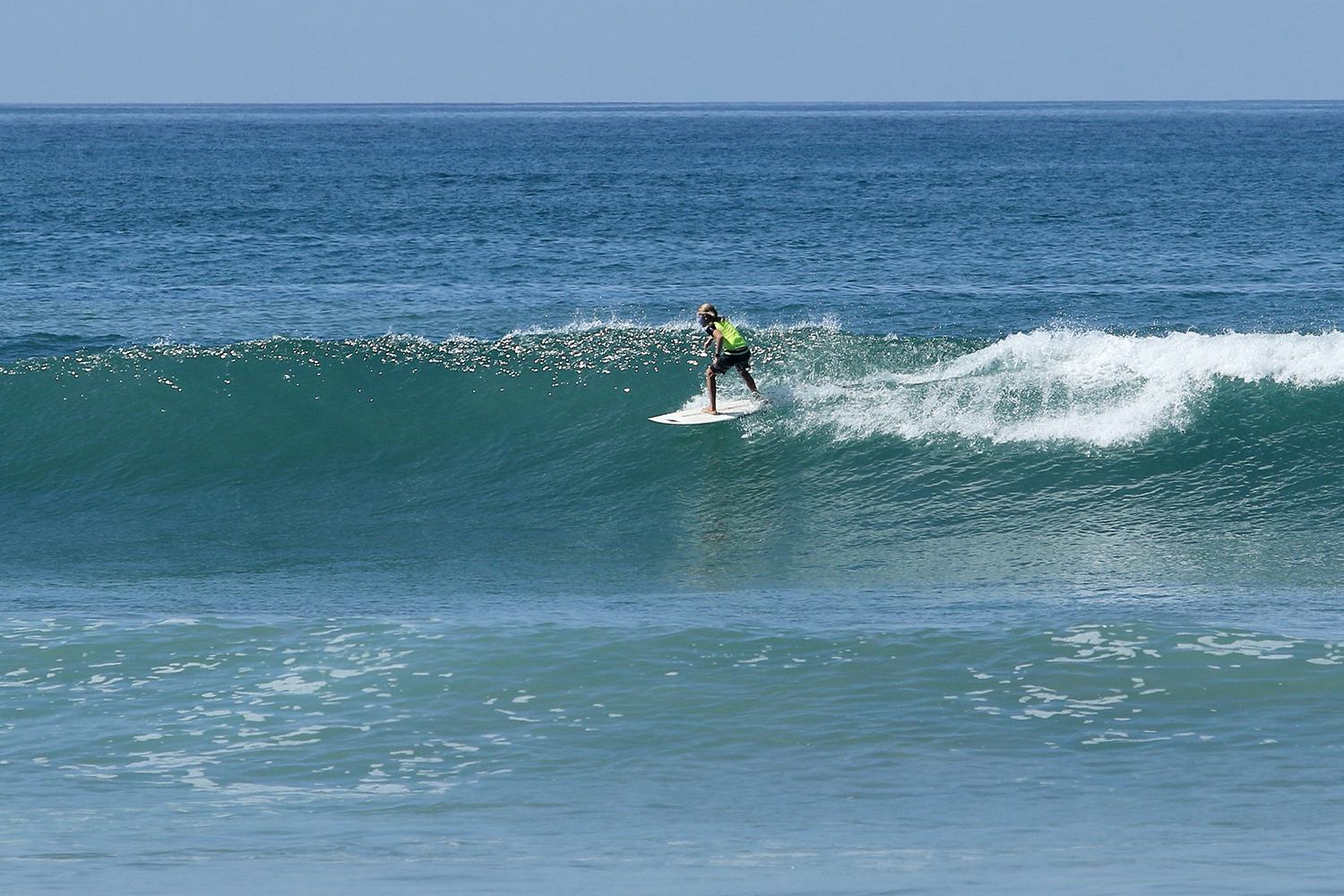
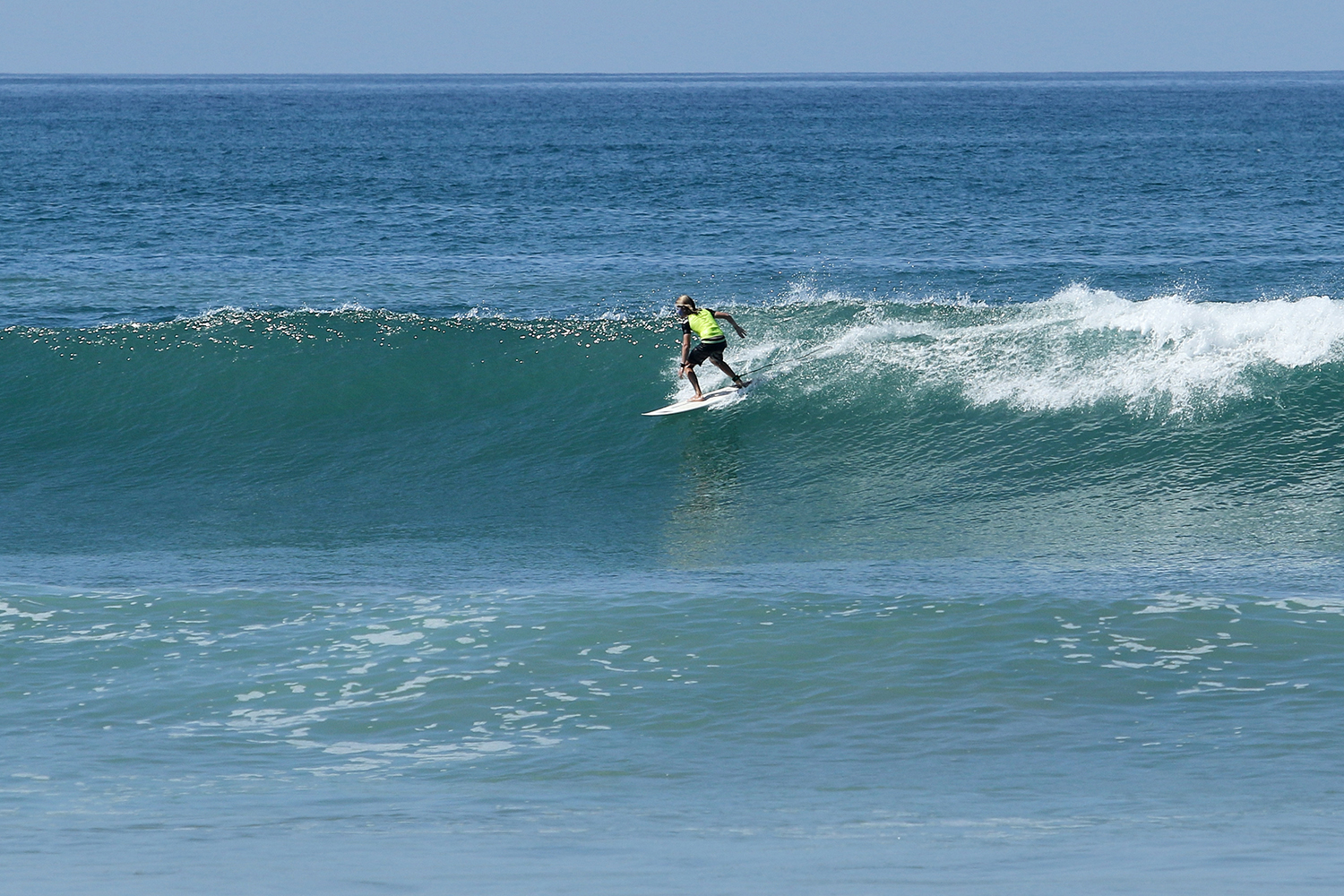

Surfeur : Malo and his GONG Surf Chemical PU Made In La France.
